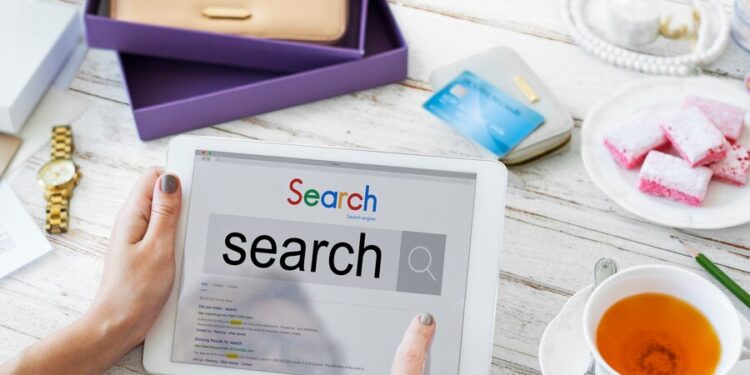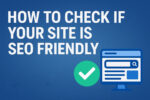Simple Strategies to Improve Local Ranking on Google That Actually Work

If you’re a business owner trying to attract more local customers, one thing is crystal clear: you need to improve local ranking on Google. Why? Because when someone in your area searches for a product or service you offer, you want your business to appear at the top—especially in the Google Maps “local pack.”
The good news? You don’t need a massive marketing budget to make that happen. With some consistency and the right strategies, you can rise above your competitors in local search and bring in more foot traffic, calls, and conversions.
Let’s walk through what it takes to truly boost your local presence on Google in 2025.
Why Local Ranking Matters More Than Ever
When people search for things like “best Italian restaurant near me” or “emergency plumber in [your city],” they’re not just browsing—they’re ready to act. According to recent studies, nearly 80% of local mobile searches result in a purchase or visit within 24 hours.
So if your business isn’t showing up in local search results, especially in the top three Google Maps listings, you’re leaving serious money on the table.
1. Claim and Optimize Your Google Business Profile
This is the most foundational step. If you haven’t already, claim your Google Business Profile (formerly Google My Business). Then take time to optimize it with complete, accurate, and engaging information:
- Business name, address, and phone (NAP)
- Business categories and services
- Updated hours (including holidays)
- A compelling business description
- High-quality, current photos of your location, team, and work
An optimized profile sends a strong signal to Google that you’re active and relevant, which helps improve local ranking on Google.
2. Focus on Reviews—And Respond to Them
Customer reviews are one of the top ranking factors for local search. But it’s not just about quantity—it’s about quality and recency too.
Encourage happy customers to leave reviews by:
- Asking after a successful service or visit
- Sending follow-up emails with direct links
- Including a call-to-action on receipts or invoices
Equally important: respond to every review, good or bad. This shows potential customers that you care, and it signals to Google that your business is engaged and trustworthy.
3. Keep Your NAP Consistent Across the Web
Google compares your business info across directories, social platforms, and your website. If your name, address, or phone number is listed differently in multiple places, it can confuse Google—and hurt your ranking.
Check and update your NAP on:
- Yelp
- Bing Places
- Apple Maps
- Yellow Pages
- Industry-specific directories
Use tools like Moz Local or BrightLocal to manage listings and keep everything synced.
4. Add Local Keywords to Your Website
Your website still plays a big role in local SEO. Make sure your pages include location-specific keywords naturally—don’t overstuff them.
For example, instead of just saying:
“We offer plumbing services.”
Say:
“We offer expert plumbing services in San Diego and surrounding neighborhoods.”
Also, consider creating location-specific landing pages if you serve multiple cities or regions. Just make sure each page has unique content.
5. Use Posts and Updates on Your Google Profile
Most businesses don’t take advantage of Google Posts—but they should. Think of it like a mini social media feed on your Business Profile.
Use it to:
- Share promotions or events
- Highlight new products or services
- Offer seasonal tips
- Post behind-the-scenes photos
Posting regularly keeps your profile active and shows Google you’re engaged—which helps improve local ranking on Google.
6. Add FAQs and Messaging
Google allows you to answer frequently asked questions directly on your Business Profile. Add your own or respond to those submitted by customers. This boosts engagement and provides quick answers for searchers.
Also, consider enabling Google Business Messaging so people can contact you instantly from search results. Faster communication = more conversions.
7. Build Local Backlinks and Citations
Google values links from other trustworthy local sources. Reach out to:
- Local blogs or news outlets
- Partner businesses
- Chambers of commerce
- Local sponsorship opportunities
The more your business is mentioned and linked to across reputable local sites, the more authority you’ll gain in Google’s eyes.
8. Optimize for Mobile Users
Most local searches happen on smartphones. If your site loads slowly or isn’t mobile-friendly, people (and Google) will notice.
Make sure your website:
- Loads in under 3 seconds
- Uses responsive design
- Has click-to-call buttons
- Clearly displays business hours and directions
Improving your mobile experience directly supports higher local visibility.
Final Thoughts
If your goal is to improve local ranking on Google, it all starts with showing up consistently, providing value, and making it easy for customers to choose you. From optimizing your Google Business Profile to encouraging reviews and keeping your website up to date, every small improvement adds up. Local SEO isn’t just about pleasing search engines—it’s about being there when your community needs you.
So whether you run a restaurant, repair service, boutique, or law office—now’s the time to take control of your local presence and start climbing those search rankings.






